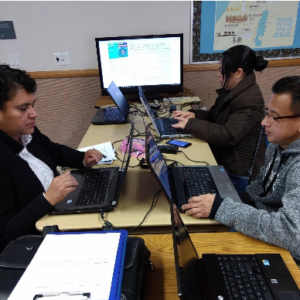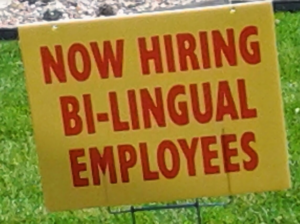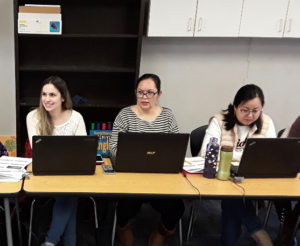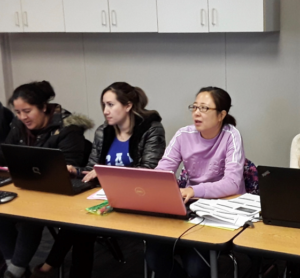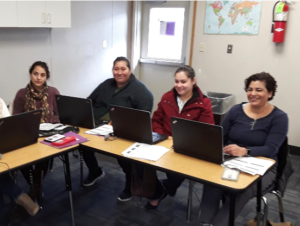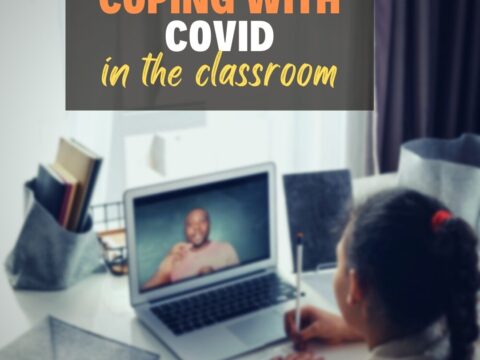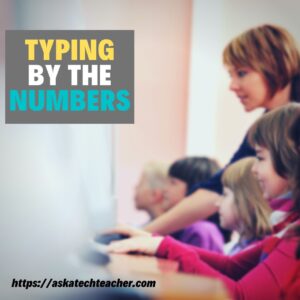 I met Dr. Bill Morgan through a shared interest in keyboarding for youngers (see this article on A Conversation About Keyboarding and this article on Preparing Young Students for Home Row Keyboarding: An Unplugged Approach). In each other, we found kindred spirits, both passionate about better ways to teach today’s learners.
I met Dr. Bill Morgan through a shared interest in keyboarding for youngers (see this article on A Conversation About Keyboarding and this article on Preparing Young Students for Home Row Keyboarding: An Unplugged Approach). In each other, we found kindred spirits, both passionate about better ways to teach today’s learners.
When Bill offered an article on a new class he started that helps English Language Learners, I was excited. It’s an important issue with not enough solutions. His approach is innovative, original, easy to implement (with some effort), and effective. Read on and see if this would work in your district. He’s included contact information so you can reach him with questions:
***
Computer Literacy for English Language Learners
“Typing by the Numbers”
Dr. Bill Morgan, Ph.D.
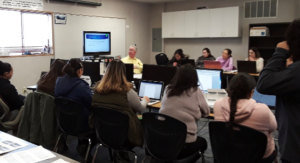 Over the decades I have added both Educational Technology and TESOL (Teaching English as a Second Language) endorsements to my elementary teaching certificate. My graduate studies focused on integrating technology across the curriculum.
Over the decades I have added both Educational Technology and TESOL (Teaching English as a Second Language) endorsements to my elementary teaching certificate. My graduate studies focused on integrating technology across the curriculum.
Along the way I began volunteering with various organizations, working with immigrants from other countries. One evening a man from another culture asked me how to spell a specific word. As I spelled the word out loud we both realized that the sound I was using to name a vowel was not the same sound that he was familiar with. It must have been Spanish, where letter A “always says ah,” letter E “always says ay,” etc. When I used the letter A in the spelling of a word, he heard the letter E. When I used the letter E he heard the letter I. It was nearly impossible for him to take dictation from me.
He then asked me to write words for him to copy in his notebook. He laughed out loud and then said, “You write like a doctor!” I took that to mean that he could read my handwriting no better than that of a doctor who had given him handwritten notes to read.
From then on I brought my laptop computer to class. When an adult English learner asked me to spell a word I would type the word then enlarge the font that could be read by all in the room. I didn’t need a projector nor a large screen TV, I only needed a laptop sized monitor.
Thinking of how I might integrate technology with instruction, I gathered a group of bilingual community members and started, “Computer Literacy for English Language Learners, NFP.” Find us on Facebook!
We then attracted donations of refurbished computers from Mike Lantz, President of “Computers to Give, Inc.” Find him on Facebook! Mike was collecting discarded laptop computers, erasing their hard drives, installing Linux, and then adding LibreOffice, a freeware version of MS Office. With Internet access we have also used Google Docs, or online versions of Microsoft Office products Word, PowerPoint, and Excel.
We began taking our mobile lab to schools, churches, libraries, and other non-profit sites. When using one computer or a small monitor as a presentation station there were four to six other workstations on each side of a rectangular table.
Most recently I learned of an ESL program for parents being offered by the local school district in trailers behind an elementary school. When I offered to bring my mobile lab to the class for monthly sessions, my offer was accepted. A translator was in the room for those who spoke Spanish.
We started by exploring the number row on the computer keyboards, thus practicing the names of numerals in English and the number of objects each key on the number line represents.
“1 is spelled ONE but pronounced wun. 1-0 is spelled TEN. Say it with me, ten. …
“1-1 is spelled ELEVEN. 1-1-0 is one hundred ten. 1-1-1 is one hundred eleven. …
“1- 1- 1- 1 is one thousand, one hundred eleven. Insert a comma after the first one.”
We were not only reading but typing numbers and using them in meaningful contexts like sharing telephone numbers, addresses, … and writing checks. I wanted these adult learners to look at the keys on the computer keyboard as they developed oral and auditory recall, along with visual and muscle memory. “Imagine yourself working in an office, taking information over the phone.”
These adults learned to use the “pinky finger” of the opposite hand to hold each Shift key while pressing the number keys to enter symbols used to strengthen passwords. We practiced lining our fingertips up while pressing the number keys from left to right. We then moved our fingertips down to the letter rows and explored each row of letters, from left to right, along with the multiple sounds that each makes in English.
I grouped words according to their vowels or consonant sounds into PowerPoint slides: “These words all have the long A sound.” Then, “these words all have the short A sound.” We identified 8 different sounds for the letter A, as well as various groups of letters, such as ei in weight that make the A sound in English. “In these words the S makes the sss sound while in these words the S makes the zz sound.”
We listed words with silent consonants, also exceptions to the silent E rule, as the students practiced typing those words. Any word with a red underline, we knew, was not found in the English dictionary and needed to be edited. “Fix those typos,” I said to them after explaining what a “typo” was and how to use the Backspace or Delete keys to fix the errors each letter makes in English.
We practiced words that ended with TH (fourth, eighth, sixteenth, fortieth, etc.) while typing those two letters using the index finger on each hand. We talked about the rule of deleting the letter Y at the end of a word before adding ETH. We practiced using the number row to identify each finger and then “hopping down” from the number keys to the letters in columns.
We then opened a spreadsheet, and practiced using the arrow keys to move up and down as well as side to side on the screen. We opened new tabs and made lists: Days of the week, Months in the year, birthdates, etc. We made lists of names in the class grouped by the first letter of each name into the column with that letter at the top and then used the A to Z alphabetize function.
The final project was to build a presentation, to demonstrate the names of all 50 United States. We grouped them by the first letter of the state name in alphabetical order. For example, there are four state names that begin with A; three that begin with C; and eight begin with M. One quote from a student in the class evaluation was, “We learned about English while learning about computers.”
Author bio:
More on ELL
Dear Otto: I need reading resources for ELL/ESL
Jacqui Murray has been teaching K-18 technology for 30 years. She is the editor/author of over a hundred tech ed resources including a K-12 technology curriculum, K-8 keyboard curriculum, K-8 Digital Citizenship curriculum. She is an adjunct professor in tech ed, Master Teacher, webmaster for four blogs, an Amazon Vine Voice, CSTA presentation reviewer, freelance journalist on tech ed topics, contributor to NEA Today and author of the tech thrillers, To Hunt a Sub and Twenty-four Days. You can find her resources at Structured Learning.

